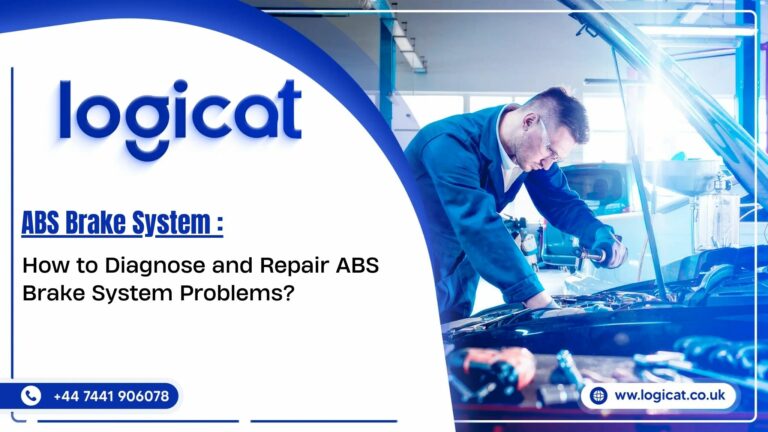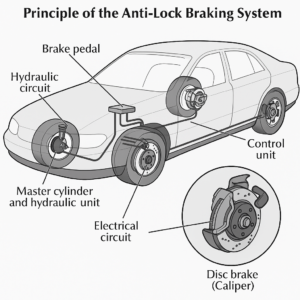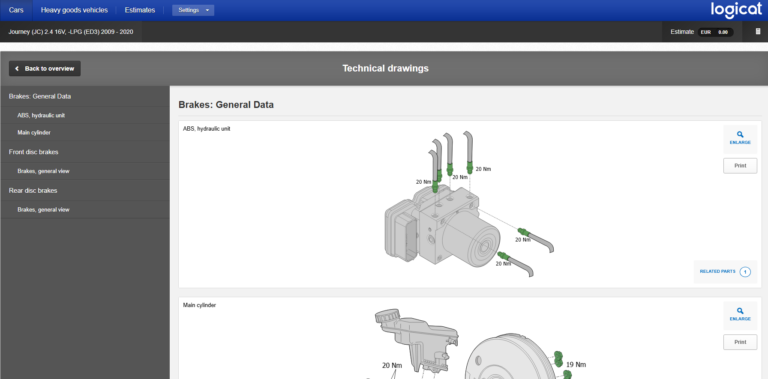
ABS Brake System : How to Diagnose and Repair ABS Brake System Problems?
ABS Brake System: The ABS (Anti-lock Braking System) is a key element in vehicle safety. It prevents the wheels from locking up during hard braking and helps the driver maintain control of the vehicle, even on slippery surfaces. However, like any complex system, the ABS can experience malfunctions.
Table of Contents
Understanding How the ABS Works
The ABS system works by controlling the rotation speed of the wheels during an emergency brake. When a wheel begins to lock up, the system reduces braking pressure on that wheel and momentarily releases it before reapplying the pressure. This process prevents the wheels from locking and the vehicle from skidding.

Signs of ABS System Malfunctions
Here are some common symptoms of ABS issues that need immediate attention:
- ABS Light On: The first obvious sign of a malfunction is when the ABS light illuminates on the dashboard. This indicates a problem with the braking system, requiring an in-depth inspection.
- Loss of Anti-lock Function: If the vehicle shows signs of wheel lock-up during hard braking, this is another indicator of an issue with the ABS system.
- Strange Noises: Unusual sounds, such as grinding or clicking noises, can also signal a problem within the ABS system.
Vibrations When Braking: A vibrating brake pedal or one that feels like it’s “bouncing” may indicate an issue with the wheel speed sensor.
Diagnosing ABS Issues: A Three-Step Method
Diagnosing ABS problems involves a systematic approach in two key stages:
- Checking the Diagnostic Code : An OBD-II scanner can read error codes from the vehicle, indicating which component of the ABS system is malfunctioning, such as a wheel speed sensor. HaynesPro helps mechanics quickly locate the problem by interpreting these error codes.
- Inspecting ABS System Components : Once the error code is retrieved, the next step is to check the physical components of the ABS system, such as the wheel speed sensors, ABS pump, modules, fuses, and wiring. These parts may be damaged and need cleaning, replacement, or repair.

Performance Testing : After repairs are completed, it’s crucial to test the vehicle on the road to ensure the ABS system is functioning correctly. An emergency brake test should be conducted to confirm that the wheels do not lock and that the car maintains stability.
Case Study: Resolving an ABS Sensor Issue with HaynesPro
Diagnosing and repairing an ABS system requires specialized skills and tools, and HaynesPro is an essential ally for professional mechanics. Let’s take an example of an automotive repair shop receiving a vehicle with the ABS light on.
After connecting the HaynesPro diagnostic tool, the mechanic quickly retrieved an error code indicating a malfunction in the right front wheel speed sensor. By consulting the HaynesPro database, they found the specific replacement guide for this sensor, tailored to this vehicle model. Thanks to the detailed information and step-by-step instructions provided by the platform, the mechanic was able to confidently replace the sensor.
Once the part was replaced, an emergency brake test was conducted, confirming that the ABS system worked perfectly after the repair. This not only resolved the problem quickly but also ensured the driver’s safety.
Thus, HaynesPro allows mechanics to diagnose and resolve ABS issues more efficiently and precisely.
Ready to Improve Your ABS Diagnostics and Repairs?
Don’t let ABS problems slow down your work. Try HaynesPro now!

